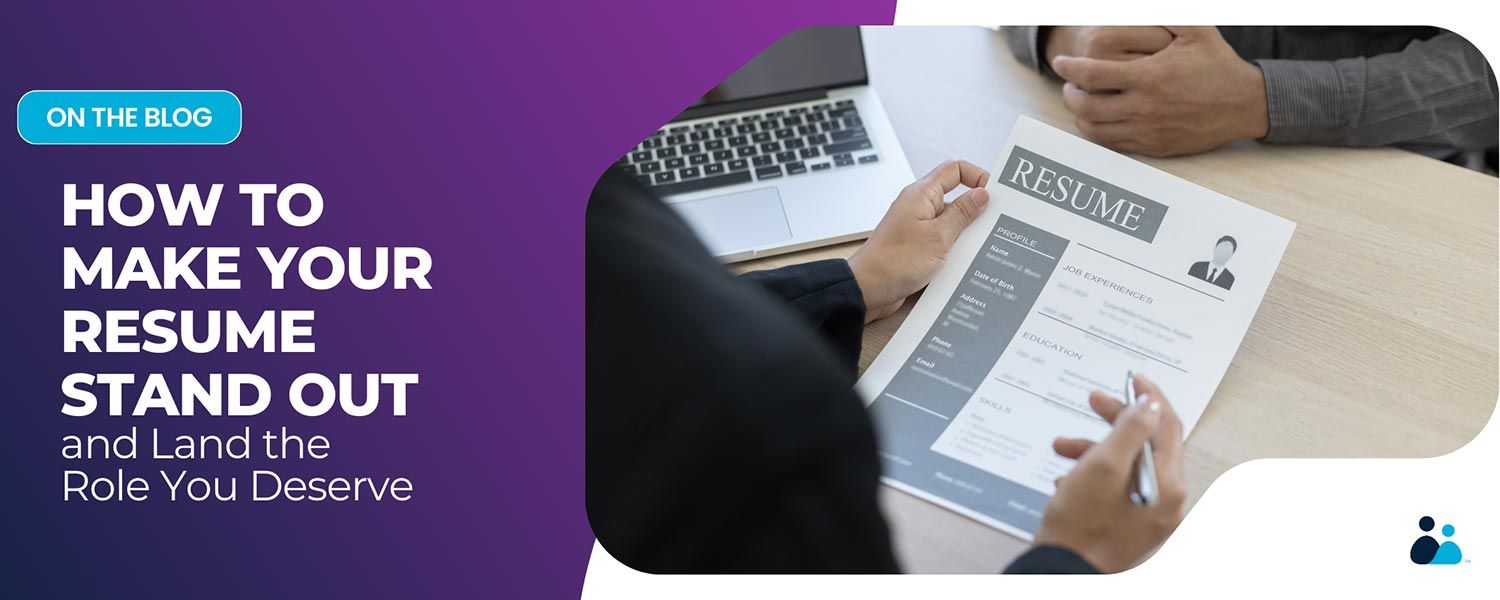How to Make Your Resume Stand Out and Land the Role You Deserve

Your resume is more than a document—it’s your opportunity to tell your story and make a lasting impression on hiring managers searching for the right talent. No matter what role in the custom integration industry, your resume must tell a compelling story demonstrating your value and potential.
Crafting a standout resume requires more than listing your work history—it’s about showcasing how you’ve driven results, solved challenges, and made an impact with your previous organizations. Follow these proven strategies to help your resume stand out from the rest.
1. Your Resume Is Your Brand
Think of your resume as a marketing tool for your career. Hiring managers will first see your professional summary, so make it count. This is your opportunity to frame who you are, what you’ve accomplished, and what you can bring to the role.
Example of a Strong Summary (for Leadership Roles):
“Innovative operations manager with 10+ years of experience leading cross-functional teams to exceed client expectations. Proven ability to streamline processes, resulting in a 25% reduction in project timelines while maintaining a 95% customer satisfaction rate.”
Example (for Technical Roles):
“Detail-oriented AV installer with expertise in designing and implementing custom smart home solutions. Successfully completed 100+ installations, achieving 20% faster completion rates than team benchmarks.”
Your summary should be tailored to the job you’re applying for and include metrics that show your impact.
2. Show, Don’t Tell: Focus on Achievements
Employers are inundated with resumes that list responsibilities, but what truly stands out are results. Use action-oriented language and measurable outcomes to highlight your achievements.
Generic:
- Responsible for managing project budgets.
Impactful:
- Managed project budgets of up to $1M, ensuring 100% on-time delivery and achieving a 15% cost savings through vendor negotiations.
To create these examples:
- Think about specific problems you’ve solved and the results you delivered.
- Use numbers, percentages, or timeframes to quantify your success.
Another Example (for Client-Facing Roles):
- Collaborated with clients to develop custom AV solutions, resulting in a 30% increase in repeat business.
Results-oriented resumes immediately demonstrate your value to potential employers.
3. Tailor Each Resume to the Role
Your resume isn’t one-size-fits-all. For each job application, carefully review the description and align your experience, skills, and achievements to the specific role. Highlight keywords from the job posting—many companies use automated systems to filter resumes, and matching their language can help you make it through the first round.
For example, if the job description emphasizes leadership and innovation, include examples that reflect those qualities:
- Leadership: Trained and mentored a team of 15 technicians, resulting in a 30% increase in team productivity.
- Innovation: Implemented a new workflow system that reduced project timelines by 25%.
Tailoring shows you’ve done your homework and are invested in the opportunity.
4. Blend Storytelling with Structure
Hiring managers spend less than 10 seconds on their first glance at your resume, so it must be visually appealing and informative. Use a combination of short paragraphs and bullet points to present your information.
Example Structure for Any Role:
Title | Company | Dates of Employment
A brief 1–2 sentence paragraph describing your role and its scope.
- Highlight a key achievement with measurable results.
- Show how you solved a problem or improved a process.
- Demonstrate a soft skill, such as collaboration or leadership.
5. Emphasize Transferable Skills and Certifications
Technical expertise is valuable in the custom integration industry, but so are transferable skills. Tailor your skills section to include both role-specific and general competencies.
Key Skills for Various Roles:
For Technical Roles
- Industry-Specific Skills: Networking, Control4, Crestron, troubleshooting, CTS certifications.
- Transferable Skills:
- Attention to Detail – Ensuring AV system installations meet precise technical requirements.
- Problem-Solving – Diagnosing and fixing system errors efficiently.
- Time Management – Completing installations on schedule while maintaining quality.
For Leadership Roles
- Industry-Specific Skills: Strategic planning, team development, budget management, process optimization.
- Transferable Skills:
- Decision-Making – Assessing risks and making strategic hiring and operational choices.
- Mentorship & Coaching – Developing employees into high-performing team members.
- Change Management – Adapting to new technologies and guiding teams through transitions.
For Client-Facing Roles
- Industry-Specific Skills: Customer relations, conflict resolution, project coordination.
- Transferable Skills:
- Active Listening – Understanding customer needs to deliver tailored solutions.
- Negotiation & Persuasion – Communicating value effectively to close deals or resolve conflicts.
- Collaboration – Working seamlessly with project managers, technicians, and designers.
Including a mix of technical and soft skills ensures your resume appeals to a range of hiring managers.
6. Don’t Overlook Your Cultural Fit
Employers want to know you’ll align with their company’s culture in an industry built on collaboration and customer satisfaction. Use your resume to highlight how you’ve worked effectively with teams and clients.
Examples:
- Team Collaboration: Partnered with sales and technical teams to deliver seamless project handoffs, increasing client retention rates by 20%.
- Client Impact: Cultivated strong client relationships, earning repeat business worth $500K annually.
These statements show that you’re not just focused on individual success—you’re a team player who contributes to broader goals.
7. Keep It Polished and Professional
Even the best content won’t save a poorly formatted resume. Make sure your resume is easy to read and free of errors.
Formatting Tips:
- Use a clean, professional font like Arial or Calibri.
- Keep the layout simple—bold headers, clear bullet points, and consistent spacing.
- Save and submit your resume as a PDF to preserve formatting.
Build a Resume That Reflects Your Best Self
Your resume is the bridge between your experience and your next opportunity. By focusing on achievements, tailoring your content, and demonstrating your cultural fit, you can stand out to employers for any role, from technicians to senior executives.



